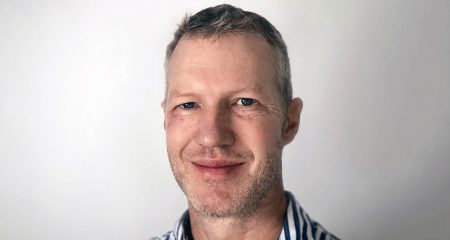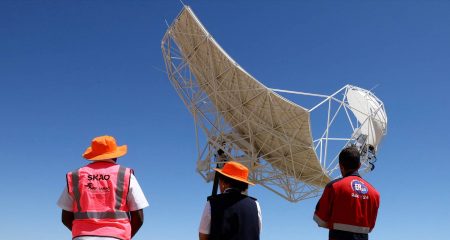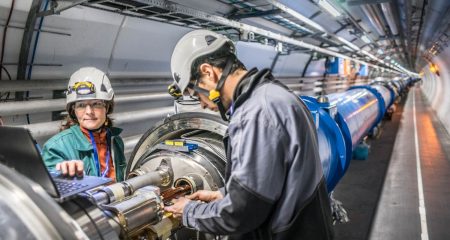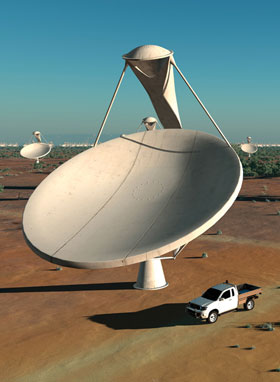 The fierce battles between SA and Australia normally reserved for the rugby field and cricket pitch have spilled over into the realm of science.
The fierce battles between SA and Australia normally reserved for the rugby field and cricket pitch have spilled over into the realm of science.
With the national teams resting, the media and politicians have been kicking insults across the Indian Ocean over the hosting of one of the world’s largest and most important scientific endeavours — the R16bn Square Kilometre Array (SKA) radio telescope, which will rank alongside the Large Hadron Collider as one of the world’s biggest scientific projects.
SA, with eight other African countries, is competing against Australia and New Zealand to host the 3 000 radio dishes that will make up the telescope. Bidding started in 2006 and was supposed to end in an announcement this month. But this was delayed until mid-May to investigate the possibility of a compromise since both sides had invested so much in the project.
The local bid runs to 25 000 pages and rests in the hands of the non-profit SKA Organisation. Although it has seven founding members, only four (China, Italy, the Netherlands and the UK) can vote on the site as the other three (Australia, New Zealand and South Africa) are bidding. It will take the support of three to win. Should SA’s bid be successful, work can then start on a remote site outside Carnarvon in the Northern Cape.
Adrian Tiplady, the SKA site bid manager for SA, outlined to parliament the advantages the country enjoyed over Australia, which “no amount of financial investment could ever buy”. These included the extreme quiet of the Karoo and the lack of radio signals in the area — the sensitivity of the equipment means there can be no local signals, such as from cellphones and terrestrial television. The Karoo also provided “the best window on the planet out of which to gaze upon the universe”, he said.
Tiplady also said a “flagship project” like this could spark the interest in young people that science needed to survive in the country and could help to stop the brain drain.
The SKA site advisory committee submitted its report in February and a decision was expected when all its members met on 3 April.
But the Sydney Morning Herald released what it said were the findings of the report, which made it clear that the SA bid was the better of the two. Since then many people on both sides have rubbished the validity of this leak, but it has set the agenda.
The Australian then quoted Australia’s science minister, Chris Evans, as saying: “The thing that works against us the most is the sympathy for doing more in Africa — the European view that says we ought to be doing more development in Africa.” Other media have reflected the national sentiment in their headlines, such as The Australian‘s “Aussie SKA bid far ‘superior’ to cocky South Africa”.
Naledi Pandor, the minister of science & technology, responded to the Herald‘s article, saying: “If the leaked reports are, indeed, accurate and there is no scientific or economic basis for a split decision, then it’s entirely logical to expect that the SA site will be preferred.”
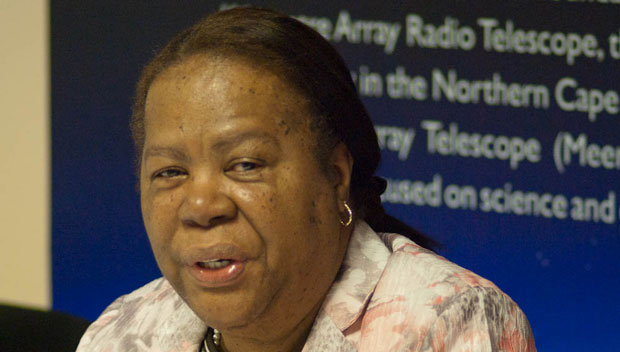
She also said Evans’s comments “reflect an inadequate understanding of where Africa is today… Our bid is sound and we won’t insult any party in an effort to sway decision makers.”
Pandor said the attacks by the Australian press were part of a concerted bid to “diminish SA’s scientific superiority” and “undermine the scientific and technical rigour of the site adjudication process”.
The debate is likely to continue until the SKA Organisation decides which country will get the nod or how a compromise will be handled. Its head, John Womersley, said this could have been decided by the time the members meet next month.
If SA does get sole custody of the telescope, half of its dishes will be within a 5km radius of Carnarvon. The rest will be spread as far afield as Ghana and Mauritius. The dishes will act like a single 1km square radio telescope that will absorb radio waves from millions of light years away. These will then be turned into images.
The frequency and size of the data mean the telescope will be able to see further into space and in more detail than conventional telescopes that use light waves. This will allow it to investigate how gravity acts near black holes. It will also be able look back in time to provide pictures of the formation of the universe because radio signals from that time are still travelling through space.
It could also catch a television signal from 50 light years away, giving people who are not rugby fans the possibility of watching alien soapies. – Mail & Guardian
- Visit the Mail & Guardian Online, the smart news source


